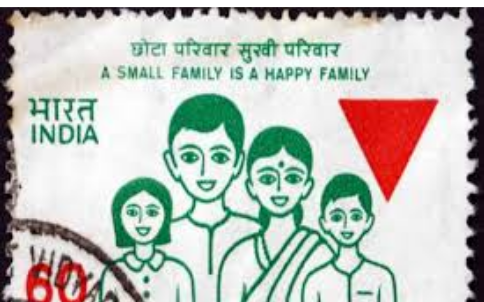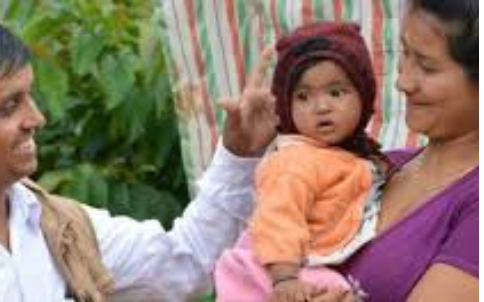(Special article on the eve of CMS completing thirty years as a unique independent research body of the country.)
After the outcome of “Assam Lab” with 2021 poll, Uttar Pradesh seems triggering now a pandora’s box? That is what the UP government’s pursuit of a two child norm policy is all about. It is as if a population bomb is ticking. Some leaders elsewhere too have taken to orchestrate or echo including in the parliament. Should the new Bill be viewed independent of the past and in isolation of a State?
As UP released its draft bill, the same day Assam CM announced in the assembly last fortnight deployment of a “population army” to help curb birth rate by distributing contraceptives in certain regions of the state. The CM stated that population control will “make majority become better with spacious houses and vehicles and children become doctors and engineers”. This was the argument being peddled in support of the population control. The draft bill of UP, on the other, states “control, stabilisation and welfare of the population of the state for promotion of sustainable development with more equitable distribution”. Very apt title for a population policy bill.

In his 2019 Independence Day address Prime Minister Modi referred to population control as a call of time and hinted at, more as an option with the government to take on as and when. A close analysis of how population “control” was followed up since in Assam and now in UP brings out that the issue is viewed more in a political context and as of a party in power rather than the larger implications to the country and as a part of long term national interests.
Population planning is not new
The idea of population planning is almost hundred-year-old in modern India. Although it was Subhash Chandra Bose who took it up at political level, it was Jawaharlal Nehru who had articulated that “India would be better off with fewer people…. instead of disease-ridden and insufficiently-fed communities”. (Discovery of India). That was how India had become the first in the world to come up with a population policy nearly 70 years ago. As a part of that pursuit a range of initiatives were taken. These schemes were expected to sensitise people about managing their families. These include access to education and health, welfare of women and children and their empowerment. Of course, all these had not lead to the kind of expected decline in population nor in socio economic levels. The situation continues to be a “glass half empty”.
My concern and engagement with family planning program in India goes back to fifty years. First as a communication strategist with the Union Ministry (1970-72), I was involved in the “Red Triangle” and “do ya theen” campaign (later changed as “hum do, hamare do“) and social marketing of contraceptives. A field survey in Hoogly and in the main markets of Lucknow had helped in formulating that strategy. Then, my second and significant engagement was from India’s first premier research body, ORG, where at the instance of the Ministry the India’s first national family planning (KAP) survey was conducted (1971-73). D V N Sarma and I wrote that report which changed the course of family planning programme of India. It was this report which brought out that education, access to health services, occupation and wife’s education were the critical factors for adoption of small family. It was this Report that changed the priorities of target and adoption of “cafeteria approach” for allowing convenient option of individual families. In between I assisted Durgabai Deshmukh founding India Family Planning Foundation (later changed as population foundation) funded by JRD.

The Ministry’s name was changed as Ministry of Health and Family Welfare (instead of Planning). And delivery of health services was strengthened with several schemes to do with maternal health and infant mortality. Rural health infrastructure was re looked and field functionaries like Dai, ANM, Anganwadi and Health extension network was strengthened. Hospital deliveries were emphasised. And, mother-in -law and social communicators like barber, tailor, teachers and local elected functionaries were focussed. The shift to what I called “unreached” and “hard core couple” became the focus to reach out with health services. These are some examples I recall in the wake of that report. Around the time Incentives for adopters of terminal methods received a boost. The idea of incentives was promoted initially by JRD Tata and Avabai Wadia with their economic calculations of cost of every additional birth to the country.
An argument that benefits of development policies have not resulted in desired outcomes because of growth in population remained a rhetoric of political leaders. Although such an assessment cannot altogether be denied. It was more because of the kind of political representation that we are having, the priorities of successive governments and governance, have been underplayed. An analysis of time series data from multiple sources which started trickling since has not become part of public discourse. The change evident in terms of decline in family size as a result of program interventions and larger development, particularly education, health infrastructure, gender, welfare, mobility factors, have not been acknowledged. The National Family Health Survey (NFHS) which picked up ten years after where ORG’s first survey left has tellingly brought out the difference or the change in attitudes and behaviour terms. Even the national sample survey data taking from the decadal Census has reflected the change. But data and research goes through twists and turns when not suitable to political bosses. If it cannot be managed it will be ignored or badnamed. My just published book, “The Third Eye of Governance” (Speaking Tiger), describes this phenomenon at length in a larger context and with examples.
Family size, fertility rate have come down
Seventy years ago family size was more than five which has come down to below three. The Total Fertility Rate has come down from above 5.9 in 1950 to below 2.5 now. Even in BIMARU states it has come down. MP, Rajasthan and Orissa in particular are examples of that change. In UP the TFR has come down to 2.7 now from 3.1 five years ago. The Government proposes now to bring it down to 2.1 next decade (which it is going to be any way without this Bill). During this period there were neither any special incentive or disincentive schemes in vogue. Very few have objectively analysed the situation with data and research for a perspective of the current scene. Exceptions are too few (like Rajdeep Sardesai and Dr Parakala Prabhakar). But then that is not palatable to the peddlers of political rhetoric.
Complex policy issues, as important as population, require research and analysis and consultations with domain experts and involvement of civil society. Without such processes, chances of sycophancy and its domination become evident as we have seen during 1975-77. In 1977, Prime Minister Morarji Desai consulted V. Pai Panandikar of CPR before making a statement on pop policy (Panandikar recommended two child norm). It said that “there is no room for compulsion, coercion and pressures of any sort”. And “our approach is education and wholly voluntary” ….however, there would be “no slackening of our efforts”.
In 1994, Prime Minister PV Narasimha Rao constituted a high level National Committee on Population with Dr M S Swaminathan as chair and six other experts which included myself, Dr Ashish Bose (of BIMARU fame). Dr Devaki Jain, T V Anthony, Dr Pathak, Dr P. Roy, all outside the government system. This Committee recommended an ecosystem and environment with social development, democratic process and involvement of local governments. Although there were views that state should not try to regulate birth rates, this committee felt the government has a responsibility but that should be on the basis of verifiable data and consultations. Not only our own experience within but many research studies have brought out that coercion and compulsion will not yield desired results but could have adverse effects.
The UP Bill
The draft bill of 2021 of UP for “control, stabilisation and welfare” is fascinatingly intriguing. It goes totally on a carrot and stick route. With checks and balance provision the bill acquires potential for making a difference. But it makes no reference to “welfare” aspects or “sustainable development” or to “equitable distribution” as its title indicates. The bill provides for easy to implement disincentives and easy to ignore (many) incentives for a two-child norm. A friend from Lucknow observed that the Bill has both “poll time threats and poll time promises”. The disincentives are compelling. Both require sterilisation. While incentives have some ambiguity, disincentives are easy to impose by any as and when locally. In both, implementation will remain sour. It provides for two parallel systems, one with two or less children and the other those with more than two. The bill is husband-centric and fundamental rights of poor will be at stake. It has not touched those with no children! What could be the incentives for those having none!

Those who adopt two child norm by undergoing sterilisation shall be given, according the draft Bill, a range of incentives which include increments, subsidies, soft loans, rebates, promotions, etc., those having more than two children, on the other, will be debarred from having benefits of all Government sponsored schemes, banned from contesting elections to local bodies, banned from applying to Government jobs, will not get promotion, will not receive any kind of government subsidy and will get ration card only for four. Surprisingly, the one having only one child gets “additional incentives” over and above (!) like two increments, college admission without fees up to graduation and preference in getting a job for the child. Over and above, “BPL couple” will be entitled for special benefits including one time one lac rupees if it is a single girl child and 80,000 in case of a single boy child. All this is applicable based on as on the commencement day of the Act. Over all, the bill is truly sarkari.
That poverty breeds population is known all along. So also safety, security and equal opportunities lead to small family norm. Without focussing on these fundamentals, can we expect shortcuts to bring peace, prosperity and development? Population policies have potential of destabilising unity and harmony. Governments cannot be insensitive to these aspects. Consultation process and counting on reliable data and independent research offer ways out. The 1994-95 report of national committee on population had suggested a holistic view to sustain pop stabilisation. We now have more reliable time series data to rely on and reflect better in our policies.
……………………
(Dr N Bhaskara Rao is a Delhi based public policy analyst of over 50 years standing. He was closely associated with family planning initiatives and research over the years. was member of 1994 High Level National Committee on population and was part of JRD Tata’s consultations (1987) on FP incentives).




